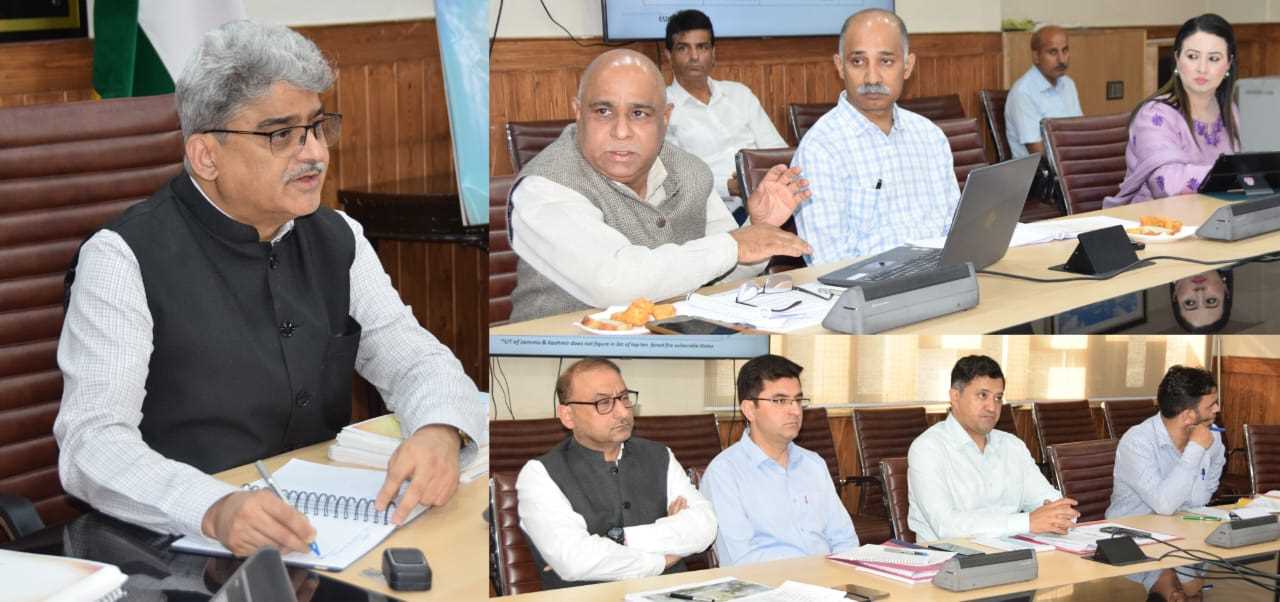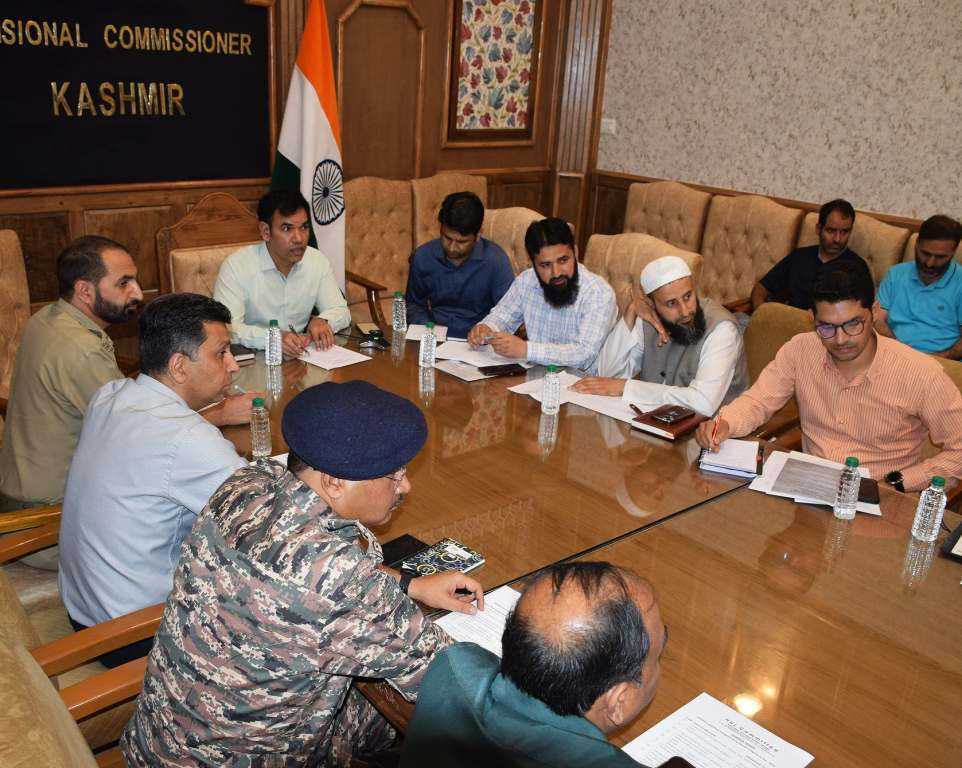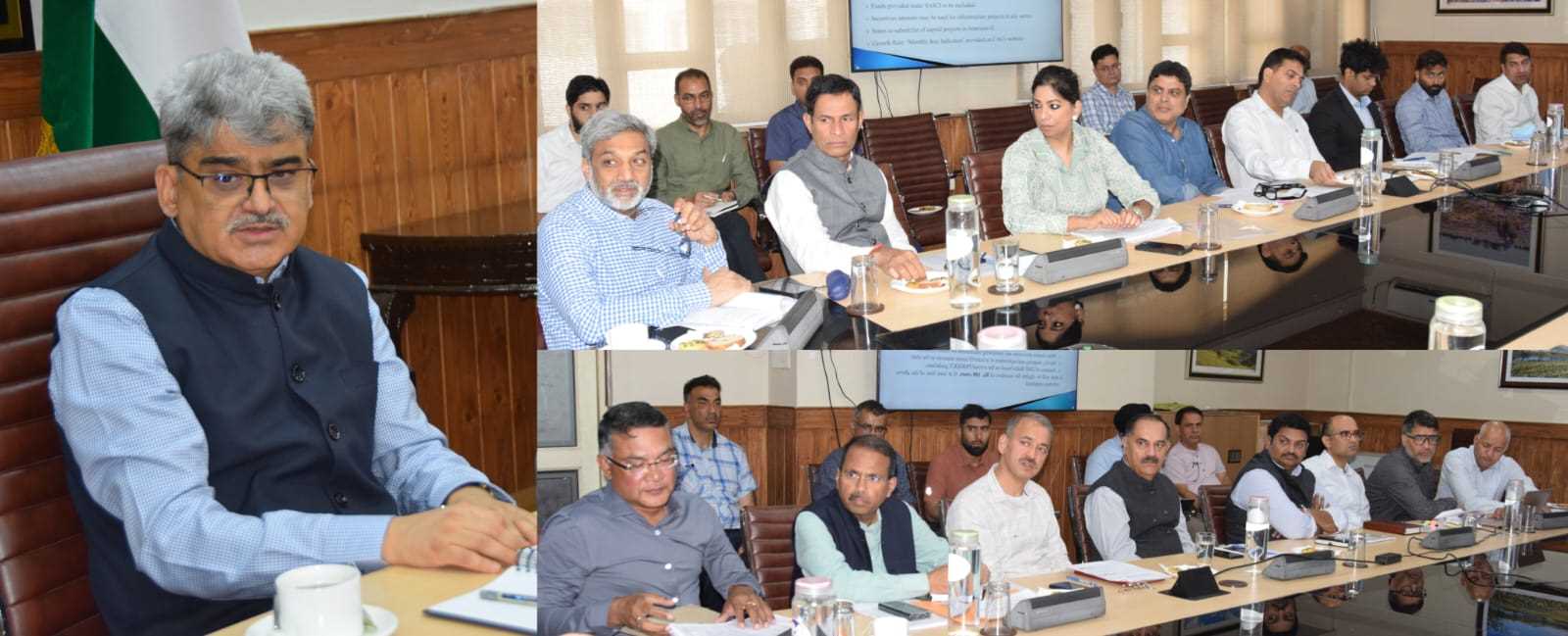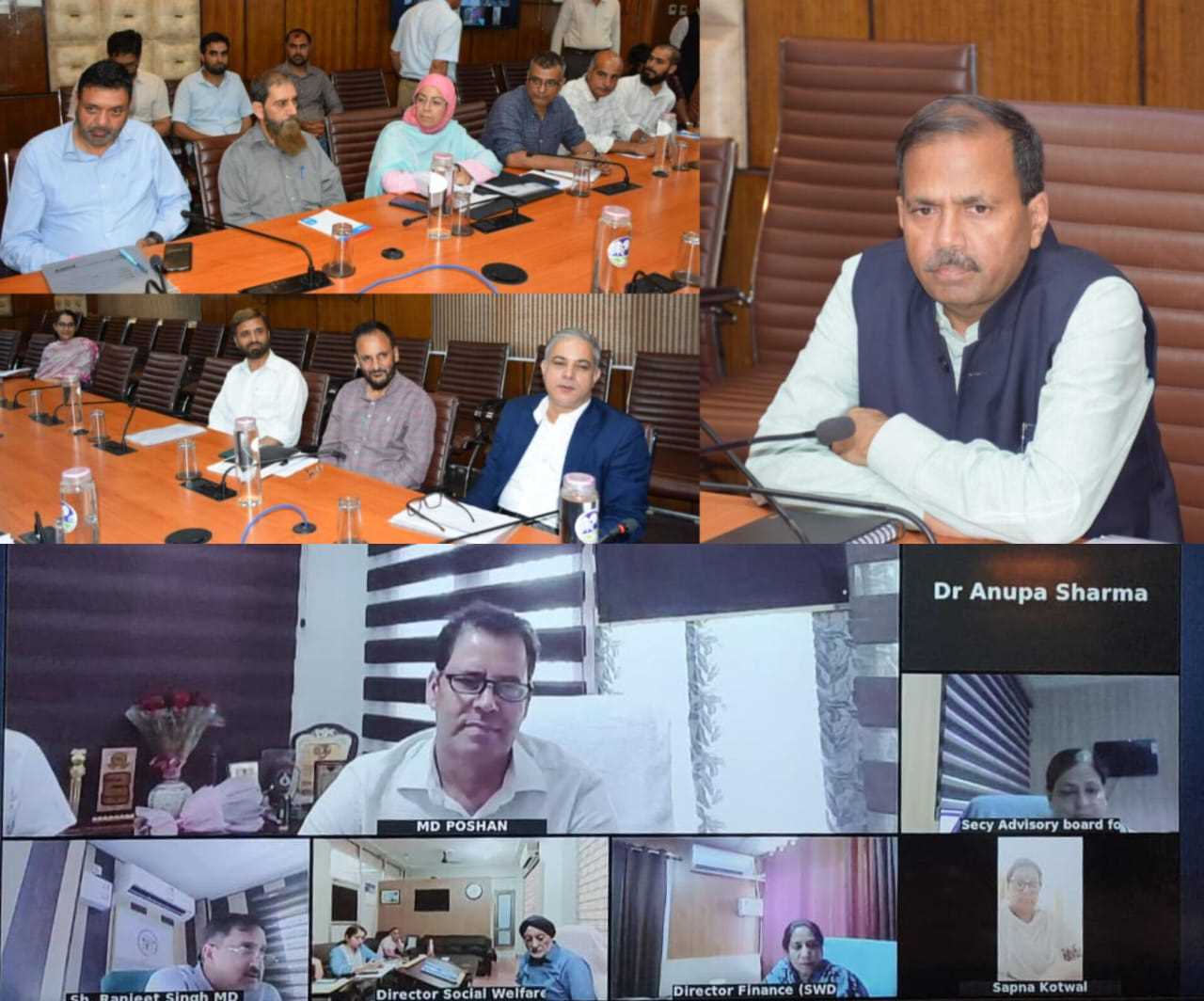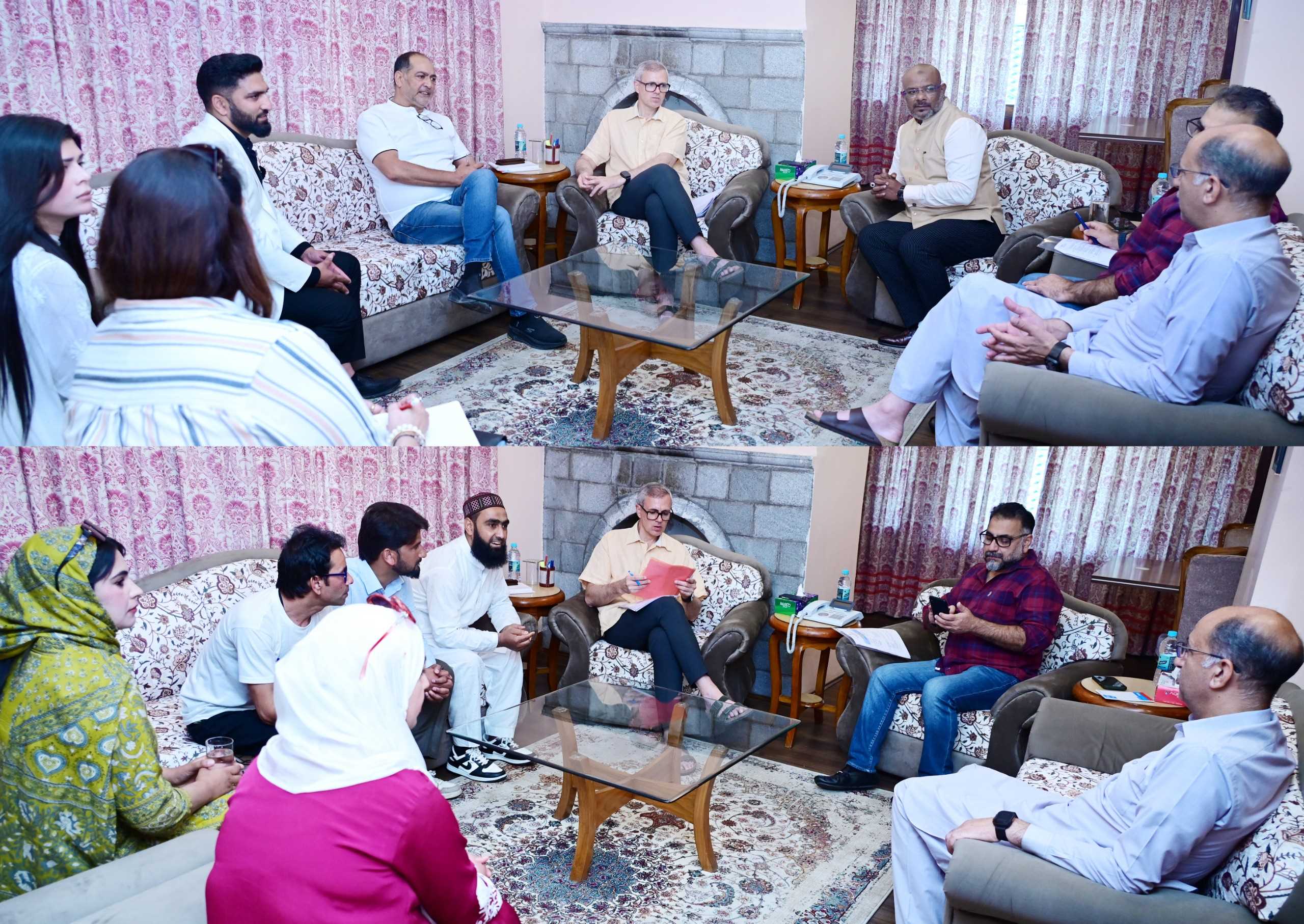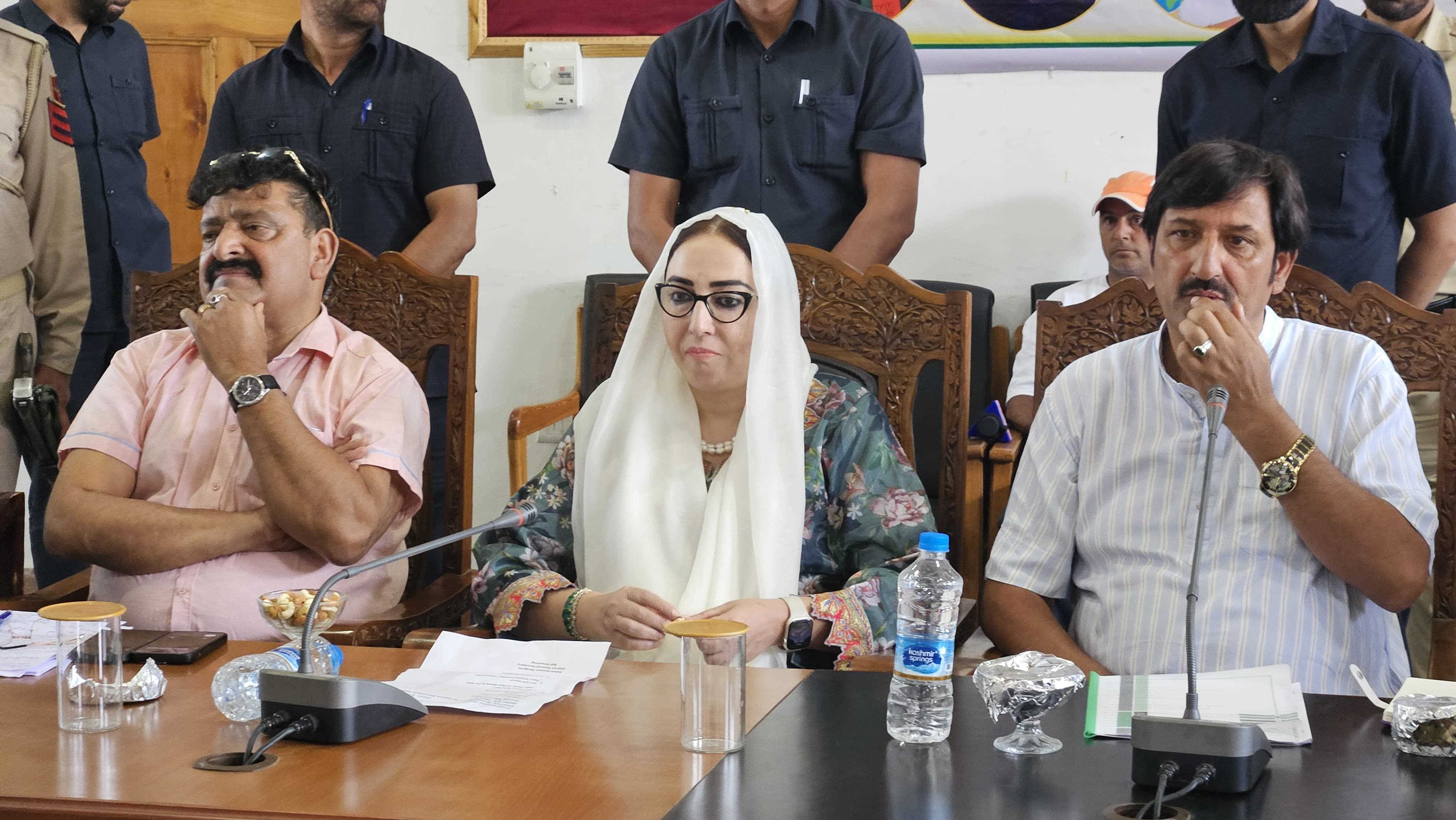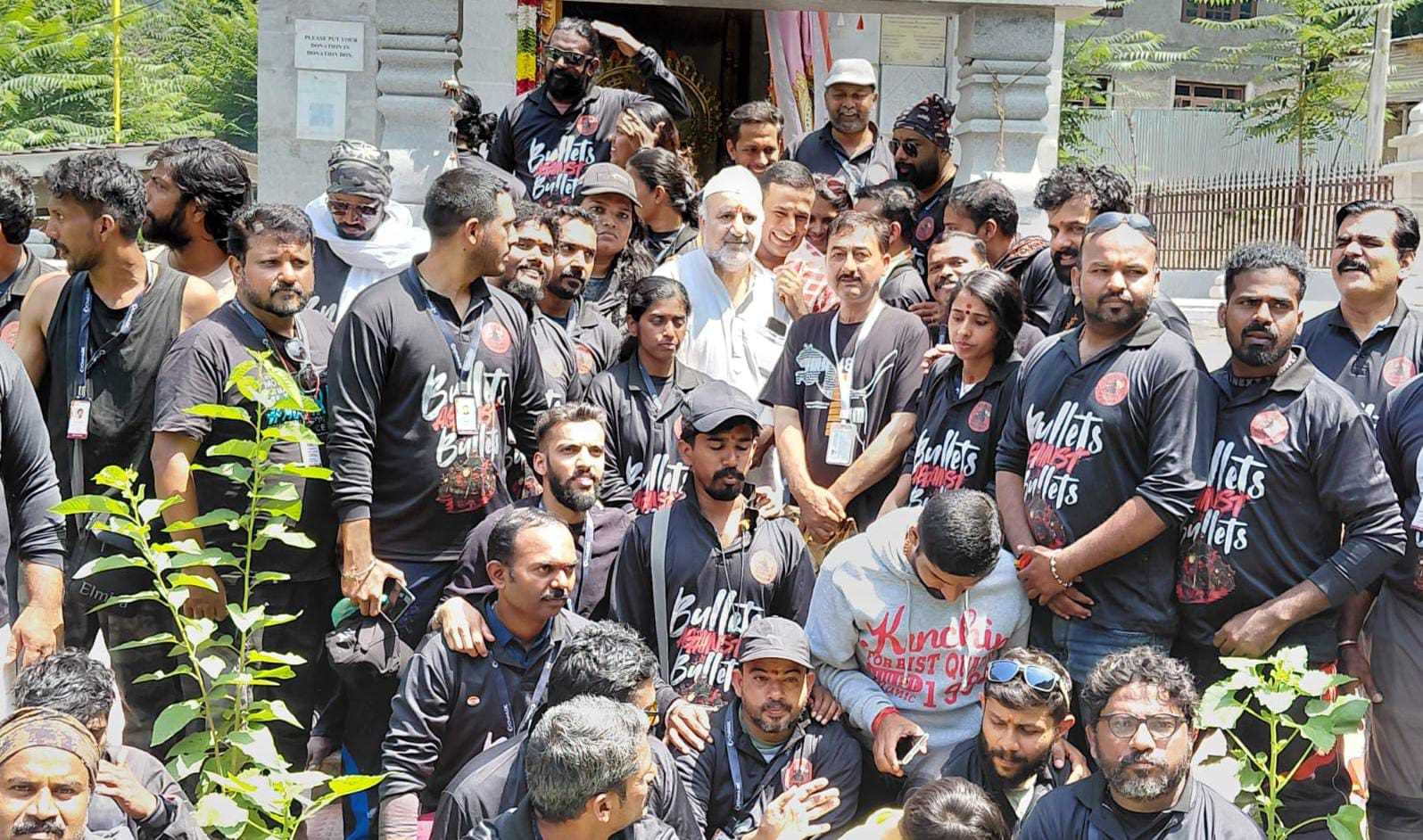Amid rising temperatures and the looming threat of scorching heat wave across J&K, Chief Secretary, Atal Dulloo, today convened a high level meeting of the Forest Department, Divisional Commissioners and district administrations regarding proactive planning to protect the region’s 'green gold' from the menace of forest fires.
The meeting besides PCCF and Commissioner Secretary, Forests, was attended by Divisional Commissioners, Deputy Commissioners, HoD’s of the Forest Department and representative from the department of DMRR&R.
In order to make the information channel more robust and efficient, the Chief Secretary stressed on registering more and more volunteers from the local community residing near forests. He advised for focusing on the SHG members and Anganwadi Workers whose presence is found far and wide in the UT.
Regarding the incidence of forest fires, he expressed concern that out of around 5000 sq kms of dense forests around 1000 sq kms are vulnerable. He enjoined upon the Deputy Commissioners to frequently review the plans being implemented for saving our green assets from turning into ash.
He enquired from each DC about the incidence of forest fires in their districts, functioning of control rooms, active fires (if any) and the measures taken by them to douse the fires once the alerts are received from the field.
Regarding encouragement of the volunteers (fire watchers), Dulloo proposed incorporation of a provision for their relief if any injury or loss of life is reported during the performance of this social work.
He also called for a vigorous IEC campaign and popularization of contact numbers of the Joint control rooms established by the Department. He also underscored the need of having a common social media platform to receive and disseminate the information about the control and prevention of forest fires in the UT.
Commissioner Secretary, Forests, Sheetal Nanda, earlier in her overview, made out that the department had undertaken a series of strategic measures to address the growing threat of forest fires across the Union Territory.
After giving details of year wise forest fires reported from the last few years, she revealed that a detailed Forest Fire Vulnerability Mapping, using historical fire data from the Forest Survey of India, was done in 2021 for each forest division. She stated that the same is serving as the basis for preparation of targeted fire management and mitigation strategies across these forest divisions.
With respect to vulnerability of forests, PCCF (HoF), Suresh Kumar Gupta, gave out that a categorization of forests had been done in J&K. He added that the UT had a forest cover of 270.11 sq kms categorised as ‘Very Highly Fire Prone’, 890.62 sq kms as ‘Highly Fire Prone’, 1244.13 sq kms as Moderately Fire Prone and majority of 19203.80 sqkmsaas' Less Fire Prone’ forests.
Enumerating the major causes of forest fires, the PCCF classified them into three broad categories of Anthropogenic (human-induced) caused by burning of crop residues, carelessly discarded smoking materials and fires lit along roadsides and use of fire for promoting growth of grass.
Among the causes are lightning strikes and rolling stones during dry spells occasionally ignite fires in forested areas. In addition, the environmental & climatic factors like extended dry spells, build-up of dry leaf litter and rising temperatures coupled with erratic rainfall patterns exacerbate the fire risks.
As far as the preventive measures are concerned, it was defined that a multi-pronged strategy had been adopted to reduce the fire incidence and improve readiness across the divisions.
It was revealed that creation and maintenance of fire lines to halt the spread of fires, controlled burning to manage combustible material and early warning systems through satellite-based FSI alerts (Van Agni) are acting as pre-emptive measures for event fires.
In addition, establishment of 85 Joint Forest Fire Control Rooms are operational across the UT for receiving instant alerts and initiation of prompt action to douse the flames. The distribution of firefighting equipment like beaters, rake hoes and sprayers are helping in doing the same with enhanced efficiency, the meeting was informed.
Besides, it was given out that mock drills and training programmes, community engagement through Village Forest Committees (VFCs, BMCs) and volunteers are acting effectively to safeguard the forests. Awareness campaigns in schools and through posters, hoardings and social media are also being employed to create necessary awareness among the public.
